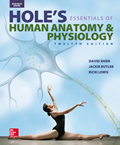Hole's Essentials of Human Anatomy & Physiology, 12th Edition (Shier)Chapter 14:
Lymphatic System and ImmunityLearning Outcomes14.1 Introduction
1: Describe the general functions of the lymphatic system. 14.2 Lymphatic Pathways
2: Identify the locations of the major lymphatic pathways. 14.3 Tissue Fluid and Lymph
3: Describe how tissue fluid and lymph form, and explain the function of lymph. 14.4 Lymph Movement
4: Explain how lymphatic circulation is maintained. 14.5 Lymphatic Tissues and Lymphatic Organs
5: Describe a lymph node and its major functions.
6: Discuss the locations and functions of the thymus and spleen. 14.6 Body Defenses Against Infection
7: Distinguish between innate (nonspecific) and adaptive (specific) defenses. 14.7 Innate (Nonspecific) Defenses
8: List seven innate body defense mechanisms, and describe the action of each mechanism. 14.8 Adaptive (Specific) Defenses, or Immunity
9: Explain how two major types of lymphocytes are formed and activated, and how they function in immune mechanisms.
10: Discuss the actions of the five types of antibodies.
11: Distinguish between primary and secondary immune responses.
12: Distinguish between active and passive immunity.
13: Explain how allergic reactions, tissue rejection reactions, and autoimmunity arise from immune mechanisms.  | 
















